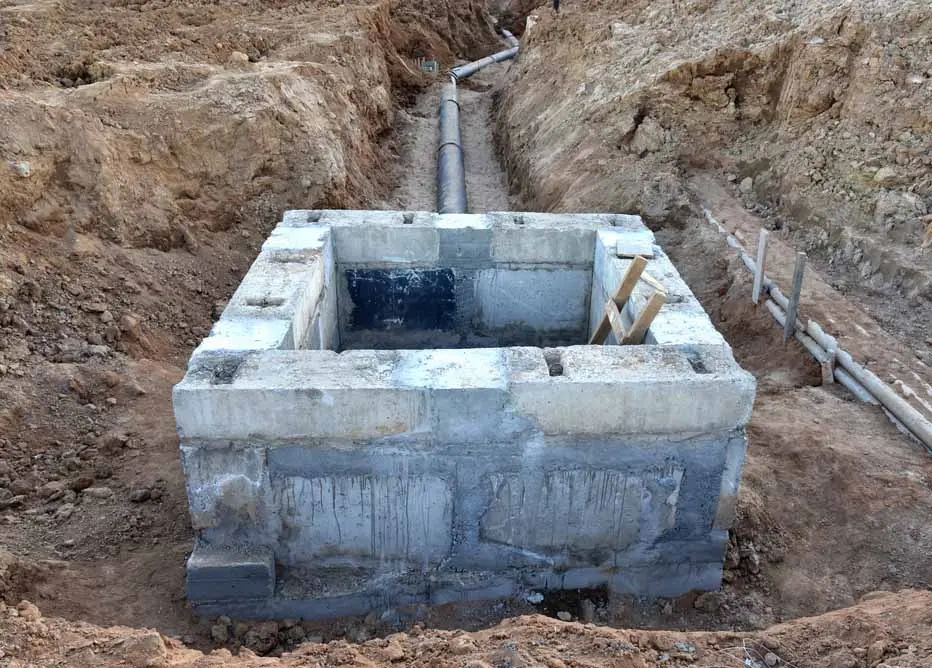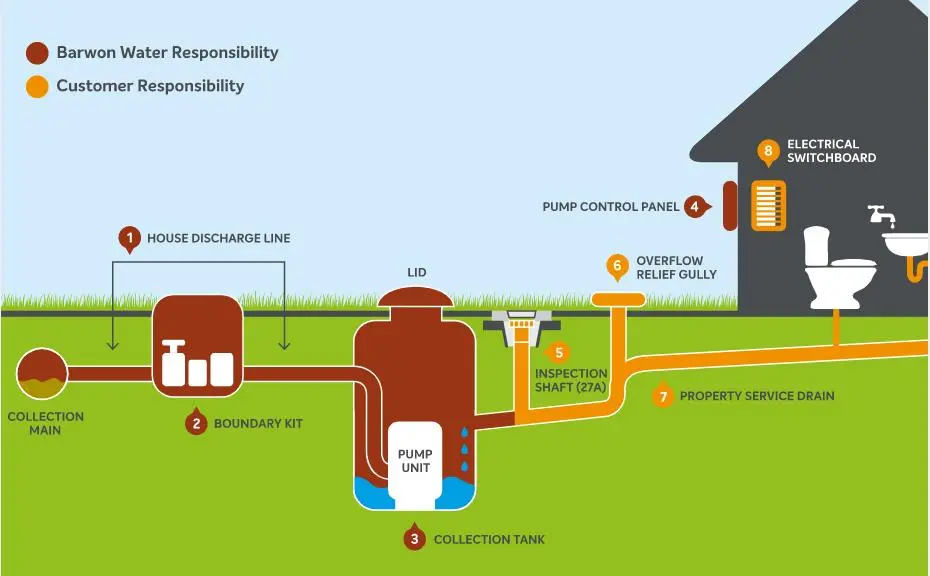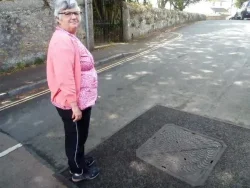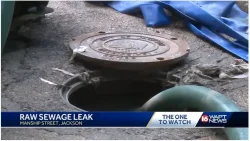2022-08-16
Most Australian cities and towns are served by sewerage systems. These systems generally convey sewerage from domestic and commercial users to treatment plants, where it is treated and either discharged into receiving environments or re-used.

The insufficient infrastructure of the sewerage system and water treatment plants is a serious issue in Australia. The sewage system encompasses components such as receiving pipings, manholes, manhole covers , pumping stations, garbage filters, sanitary sewer, stormwater drain system, and drain grates, Sewerage ends at the entry to a water treatment plant or at the point of discharge into the environment. It is the system of pipes, chambers, manholes, etc. that conveys the sewage or stormwater.

Industrial Waste Water
Generally, where a sewer and treatment plant capacity is available, conforming trade waste should be discharged to that system with the approval of the local sewerage authority. Industrial wastewater is chemically aggressive and can corrode pipes and equipment in both the sewerage collection system and the treatment plant. Greases, fats, tissues and garbish can cause sewer blockages resulting in flooding of upstream users and spills to the environment. An excess of these materials can accumulate within the treatment plant generating odours and toxic gases, increasing hazards higher maintenance costs and detrimental discharges to the environment. Discharges can hydraulically overload sewers and treatment plants so that wastewater does not receive adequate treatment Highly volatile wastes, which may be flammable or toxic, can endanger operations and maintenance personnel and cause damage to the sewerage system, or affect the environment and cause health risks to personnel. Wastes containing toxic materials, metals, pesticides ,or persistent organic compounds pollute water resources when an overflow happens. or rendering a watercourse unsuitable as a supply of drinking water or as a recreational resource. These substances should not compromise the environmental values of the receiving waters. The environmental values are described in the Australian Water Quality Guidelines for Fresh and Marine Waters.
Australia's sewer authority brings out a trade waste control program that depends on adequate legal power to enable the sewerage authority to control trade waste generators. Include- Deny or impose requirements on existing, new, increased or varied contributions of trade waste discharged to a sewerage system. Establish and enforce deadlines for the installation by waste generators of any pretreatment facility or technology needed to meet applicable discharge criteria.
Combined Waste Streams
If it is chosen to monitor the combined wastewater, the sewerage authority may apply a discharge limit calculated using the combined waste streams. The waste stream should be separated from the stormwater pipe to avoid overflowing to the outdoor water sources.
Plastic and other Materials
Plastic, rubber, and similar materials in biosolids are obvious undesirable foreign materials. Most plastics are non-biodegradable and will build up in soils to which biosolids are continually applied. Plastics can also cause damage to stock or wildlife by ingestion, Those materials are delivered to landfills, recycling, or incineration plants.
Sewage
An overflow causes or has the potential to cause environmental or health harm. The scale of the spill depends on the volume and duration of the overflow and receiving environment characteristics. Ideally, there should be no overflows in front sewerage systems, apart from those caused by exceptional circumstances: extreme rainy weather events and/or major sewerage system failures. Accordingly, some systems are designed with overflow structures intended to control the location of overflows and reduce environmental or health risks. Overflows can occur from gullies and other private property points designed to prevent flooding of houses. Professional asset management can predict mechanical breakdown and structural failure of sewerage infrastructure.
Causes of Sewer Overflows
Sewer overflows occasionally occur in sewerage systems. The cause of overflow can be listed as below
Sewer Blockages
The most common cause of dry-weather overflows is completely or partly blocked pipes. These are more common in smaller diameter pipes. Sometimes blockages in sewers are due to disturbance in the vicinity of the pipelines such as construction and land subsidence. Typically, blockages develop when overwhelming of garbage and sludge . It is common for the blockage to become worse as the obstruction in the pipes catches solids from sewage.
Pumping Station Factors
Overflows during dry-weather situations also occur from pumping station malfunctions and rising main bursts or damage. Pumping station failures may be due to factors such as equipment failure or interruptions to the power supply, which are unable to be rectified before the storage volume for a pumping station is exceeded. Rising main damages may be due to failures in maintenance, the age and condition of infrastructure, orin coordinating urban activities such as construction and excessive overburden on mains. Overflows from rising mains are generally of shorter duration and mitigated by planned cut-off pumping which may result in controlled overflow at pumping stations.
System Growth
Another potential cause of overflows is sewers and sewage pumping stations that are too small to carry sewage from newly developed subdivisions or commercial areas. This occurs when urban growth is not foreseen and accounted for.
System Conditions
Problems can be caused by a deteriorating sewer system or by failing to account for the impacts of additional growth. The sewer should consider the effect of gravity, so the whole pipeline should be inclined to reduce the settlement of sand and debris.
Major Industrial Discharges
Major industries often have large trade waste retention tanks and large quantities of trade waste may be discharged into sewers in short time periods. If sewerage "catchment" has several such industries and if multiple discharges occur simultaneously, sewerage system overflows may occur. To optimally manage these discharges trade waste agreements between the industry and the sewerage authority should include specific details on discharge frequency considering, sewerage system capacity, and diurnal flow fluctuations.
PACTS
Sewage overflows exert physical, chemical, and biological effects on the receiving environment. This may result in human health, and environmental and aesthetic impacts, which can be both acute and cumulative. Such impacts are dependent on the characteristics of the discharge and receiving environment.
Potential Human Health Impacts
As sewer overflows may contain raw sewage, they can carry pathogens (disease-causing organisms). These include bacteria, viruses, protozoa (parasitic organisms), helminths (intestinal worms), and inhaled molds and fungi. Thermotolerant coliforms and enterococci can be used as indicators of pathogen pollution. The diseases they may cause range in severity from mild gastroenteritis (causing stomach cramps and diarrhea) to potentially life-threatening ailments such as cholera, dysentery, infectious hepatitis, and severe gastroenteritis. Human health impacts can be dependent on the duration of exposure to, and the levels of pollutants in the overflow. Humans can be exposed to pathogens through:
overflows into drinking water sources; direct contact with overflows in public areas such as parks, streets, or goes to swimming or boating waters
Potential Environmental Impacts
Sewer overflows can contain a range of pollutants including sediment and turbidity; nutrients, particularly nitrogen and phosphorus; toxicants, including metals, pesticides, and other chemicals; substances creating a biochemical oxygen demand; and gross pollutants, including plastic and paper products.
Pollutants from sewer overflows can also potentially affect groundwater. Fine sediments and organic matter may clog infiltration zones, while toxicants, bacteria, and rotten organics can affect groundwater quality. Similarly, groundwater and tidal water intrusions into sewers can cause overflows and possibly increased salinity, thus affecting the re-use potential of the treated sewage effluent. Pollutant concentrations in dry weather sewer overflows are generally higher than those in urban stormwater. In wet weather, though, sewage overflow concentrations are diluted and stom1water pollution levels rise. As stormwater volumes are often higher than sewage overflow volumes, loads of most pollutants in stormwater are frequently higher. A common exception is a bacterial pollution when sewer overflows can be the dominant source in wet weather. Definitive comparisons are difficult due to the variability in pollutant levels for both sources.
Managing Sewer Overflows and Other Emissions
A source control or pollution prevention approach should be the focus of sewer overflow management. This equates to appropriate management, operations, and maintenance, in addition to structural techniques such as minimising infiltration/inflow and leakage. Downstream techniques, such as amplification and storage, should only be considered for the residual impacts that cannot be cost-effectively mitigated by source controls.
Sewerage systems are to be managed and designed to undertake best practice environmental management (BPEM) and best practice engineering standards (BPES). It should be remembered that sewer overflow management is an integral part of effective sewage management, which includes financial management and meeting customer expectations.
Nuisance odours and other gaseous emissions from sewerage systems should be compliant with relevant State air quality policies and regulations. Nuisance ododor should not be detectable outside the control structures. Odour management is largely related to the control of septicity and the provision of ventilation.
Regulatory Approaches
Regulation by ordinances or by-laws is widely used at a State/Territory and at a local level to prohibit stormwater connections to sewerage systems. The direct regulation of overflows by environment protection agencies (e.g., through licensing) is a relatively new approach that differs from (but is complementary to) encouraging environmental management of sewerage systems or setting receiving
water quality objectives. The management process can be based on the Environmental Management System approach outlined in the ISO 14001 series of standards.
Under the current system, governments set the standards for overflows (often on the recommendation of the regulator). Resource managers normally monitor the system whilst the regulator ensures adequate and appropriate monitoring is undertaken and audited. Regulators may indirectly influence the sizing and extent of infrastructure works as well as levels of investment in sewer maintenance and performance.
Regulatory Approaches
The standards for overflow should be based on potential impacts on the health of humans and the environment as reflected in environmental values and associated water quality objectives for receiving waters. (NWQMS Australian and New Zealand Guidelines for Fresh & Marine Water Quality 2000).
A number of approaches could be used for the regulation of overflows. They could be used separately or in combination. Possible approaches to overflow regulation are noted in the sections below. These approaches could also include requirements to: record overflows from the sewerage system; report overflows to a regulatory authority and/or report significant overflows to the public; and follow emergency response procedures in the event of a significant overflow.
The resource manager must comply with the relevant environmental and/or health legislation about overflow management and compliance requirements.
Presumption Approach
This presumptive approach would need to be supplemented by conditions relating to dry weather overflows. There are a number of limitations with this approach. Due to rainfall variability, the number of wet weather overflows per year can vary for an individual sewerage system. Also, compliance with these conditions may require extensive monitoring. Difficulties may also arise in allocating responsibility for exceedances of ambient water quality objectives, given compounding factors such as urban stormwater pollution and other point sources of pollution. A variation on this approach is to determine actions required to meet these criteria based on the modelling of the system, with the regulation being based on the implementation of one of these criteria.
Asset Management Approach
Rationalising maintenance and retrofit infrastructure priorities are influenced by cost and risk-based analysis of environmental and human health impacts. The overall performance of the sewerage system may be assessed on specific target overflow frequencies. Achievable targets would depend on the age and condition of the system as well as its design (and maintenance regime).
When determining expenditure to upgrade wet weather sewer overflow systems, the quantification of cost and benefits should be assessed to justify the use of resources. Where significant expenditure has required the assessment of the likelihood and consequence of impacts is also required.
Assess Existing Conditions
This part of the planning process describes the existing conditions of the sewerage system and its catchment. Data collected on the sewerage system can include the location of all designed overflow structures and potentially affected areas. These can be presented on a map of the system using the Geographical Information System (GIS);
the characteristics of any sewage pumping stations (e.g., inflow rates, storage volun1es, detention times, pump characteristics, alarm characteristics); population, land use (e.g., residential industrial), and sewage flow data (monitored or calculated); data on major industrial discharges and trade waste license conditions; conditions relating to external service providers (e.g., power supply reliability, remoteness from supporting services, etc.); any modeling of the sewerage system to determine its capacity; quality characteristics of sewage, in dry and wet weather; data on leakage (or exfiltration) from the sewerage system (possibly calculated using dry weather flow and water consumption data); information on the condition of the sewers. At a minimum, this may include the age of the sewers. It could also include any sewer inspection information (e.g., from closed circuit television (CCTV) inspections); and records of any dry or wet weather overflows.
Data on the environment affected by the sewerage system can include: water quality and aquatic ecosystem information, including the potential for mosquito breeding; information on the flow characteristics of receiving water bodies (e.g., flow rates for watercourses, tidal characteristics for estuaries); information on urban bushland potentially affected by sewer overflows, including any rare or endangered species;
Aquatic recreational areas (e.g., popular bathing areas); land-based recreational areas likely to be affected by overflows (e.g., sporting fields); information on other sources of pollution (e.g., point sources, urban stormwater); climatic data, particularly rainfall patterns; soil characteristics, particularly those that may affect sewerage systems (e.g., expansive clays, sands, land subsidence, groundwater flows, slope stability, flood effects); and vegetation characteristics in the vicinity of the sewerage system (again, those likely to affect sewers, particularly in terms of root infestations).
For smaller systems, some of this data may not be readily available. In these circumstances, the plan could be prepared based on the available data, supplemented by scientific and engineering jujudgmentAn action identified in the plan could be to collect important additional data to enable future versions of the plan to be refined. If the data needs are significant, additional investigations could be undertaken before proceeding further with the plan.
Identify Issues and Causes
This step involves identifying the issues or problems that may prevent the management objectives from being met. These issues may include: & exceeding water quality criteria, possibly caused by sewer overflows; management and treatment of overflows to prevent the potential for mosquito breeding; overflows having an impact on urban bushland areas; discharges into private properties; frequency of dry weather overflows exceeding a specified limit; lack of or inadequate recording and reporting procedures for overflows and sewerage systems; lack of or inadequate emergency response procedures and actions for overflows; power supply reliability; inadequate trade waste license conditions compromising the sewerage system (e.g., not coordinating the release of major industrial discharges or requiring adequate trade waste management practices); Failure in coordinating urban activities; mine subsidence and other geological activities; corrosion of sewerage system components; erosion of sewerage system components; and misunderstanding of sewerage system operation by stakeholders.
bodies, and relevant state/territory government agencies (e.g., human health and environment protection); and community consultation. The community may identify the location of overflows during a consultation process, which may also allow greater community.'ownership' of resulting management decisions. The underlying causes of some of these issues may not be immediately obvious and may require further investigations. Potential causes may include infiltration/inflow into sewers; inadequate sewerage system storage volumes and alarm systems for failures at pumping stations, inadequate response times to alarms; insufficient sewer capacity to carry the actual flow which is elevated above the original design flows; inadequate operations and maintenance of sewerage systems; inappropriate trees planted over sewers; poor sewerage system amplification, including not providing for the impact of new connections on the frequency of downstream overflows; and poor sewer design standards, sewer construction specifications and inspection procedures for new sewers.
The level of complexity of the investigations to assess the risk of overflows will vary, depending on the system size, the consequence and likelihood of the potential hazard, and the resources available. Potential actions to address overflows can be evaluated by assessing:
Identify and Evaluate Options
Estimated capital cost; estimated operations and maintenance costs; effectiveness in addressing the issue, including the ability to address multiple Issues; ability to complement other potential management practices; the proportion of the problem/issue addressed by the option; any adverse environmental impacts; technical and administrative viability; whether any legal requirements are satisfied; consistency with policies on other related issues (e.g., human health); and expected community acceptance.
Organizational Management
To a certain extent, organisations base their asset management on human resources, customer services, and finance. It is important that organisations that manage sewerage systems have clearly defined accountabilities relating to managing overflows. These accountabilities relate to: seerage system planning; preparation and implementation of an overflow abatement plan; system maintenance which may include separate responsibilities for inspection and maintenance;
maintenance of records relating to overflows; and acceptance of new connections to the system. It is also important that there is a defined chain of communication and responsibilities laid out in the event of a serious overflow. These responsibilities include reporting the overflow to the appropriate authorities, sensitive downstream users, and the public. Another important aspect for management is the appropriate training to manage overflows. This primarily applies to the staff of the organisation. Training can address appropriate operations and maintenance, system planning and inspection procedures for new connections. It can also highlight the responsibilities of individuals and explain the resources available to assist them in carrying out their roles. Operations and maintenance training can include training of staff in a number of skills, to ensure that the effectiveness of operations and maintenance activities are not compromised in the event of illness or absence. Refresher training could be provided to ensure that skills and knowledge are not lost over time and new techniques and technologies are used to manage overflows. Training should also be provided to consultants, developers and contractors on the requirements for new systems.
In addition to technical requirements for new connections, the financial implications of new connections will need to be considered. New connections may result in the need to amplify downstream sewers or treatment plants. While a contribution to ongoing costs will be provided by the new ratepayers, consideration must be given to a charging scheme that recovers some or all of the capital costs of any required ' system augmentation. For most properties, this cost will be around $3,000 to $6,000. The cost may be more for some properties depending on things like the distance of your house to the sewer connection point, ease of access to your pipes and the compliance of your property's existing plumbing.
Short-term option
There is a range of system input (or demand-side) management techniques that can be implemented to minimise overflows and their impacts. These pollution prevention techniques include controlling wastewater inputs, in particular, major trade waste discharges to sewer, customer education, and dry weather flow reduction.
Sewage from industrial areas often has higher levels of pollutants than that from domestic sources. Therefore, overflows from these areas have the potential for a higher environmental impact. Solids, grease and corrosive substances have the potential to cause overflows or cause deterioration in sewers.
Trade waste agreements are necessary to ensure that discharges to the system do not have excessive levels of pollutants. This is an integral consideration in determining whether the sewage treatment plant can accommodate these pollutants. Further details on trade waste issues are provided in the NWQMS Guidelines for Sewerage Systems: Acceptance of Trade Waste (Industrial Waste).
Education programs can assist in educating the community in overflow managelnent. For example, this program could: highlight what to avoid putting in a sewer (grease, oil, sanitary pads, disposable nappies, cotton buds); encourage low phosphorous detergents; advertise the location of collection facilities for liquid waste for the community; and identify the species of trees suitable for planting above sewer pipes etc (to minimise root infestation).
Another aspect of community education is encouraging the inspection and maintenance of property sewers/drains. The length of these sewers is often approximately equal to those owned by the sewerage system manager. A community education campaign could also encourage checking of pipeline locations with the sewerage system manager before doing construction work.
When Australia's district sewage relatedv departments decide to build a new sewer network. They conduct various health and environmental assessments, spillover assessments, and process monitoring methods, formulate laws and regulations for relevant responsible persons, and then outsource the projects to relevant engineering companies and contractors in Australia. Most individual properties that need a connection to the municipal sewer system will pay $3000-6000 (or higher) for the permission, and subsequent monitoring and maintenance will rely on this fee revenue and expenditure cycles to reduce consumption on taxes.

However, in many cases, the construction of a new sewer network cost tremendous taxes and works. Plans go through numerous evaluations and tabletop meetings before they are implemented. Hence the related departments is reluctant to expand infrastructure investment in sewer sewage treatment plants when sewage treatment cost overwhelming the tax budgets. Instead of connecting to the municipal sewer system, many of properties owners prefer to purchase and install water purification systems themselves and entrust sewer contractors and project companies for the construction of sewer systems.
The Right Manhole Cover and Frame Installation That Keep Troubles Away
The Beauty and Purpose of Hospital Manhole Covers Shows More Symbolic Strength




